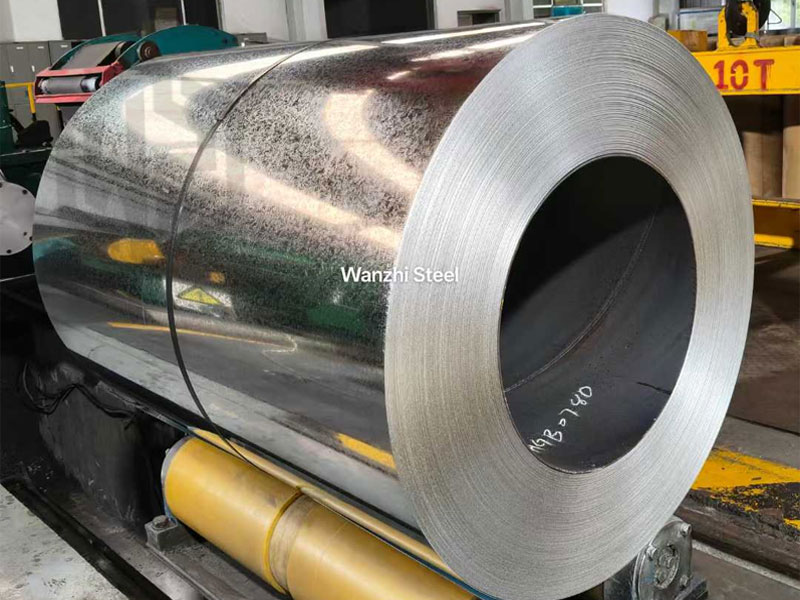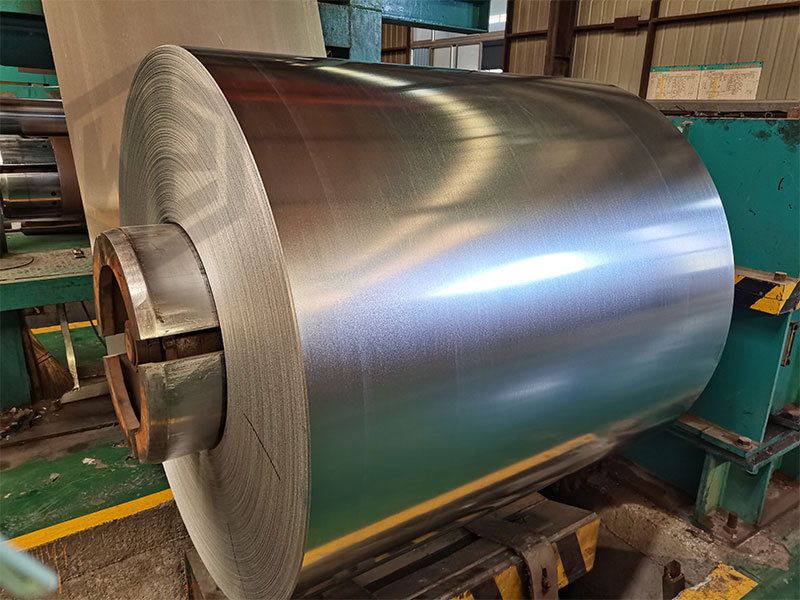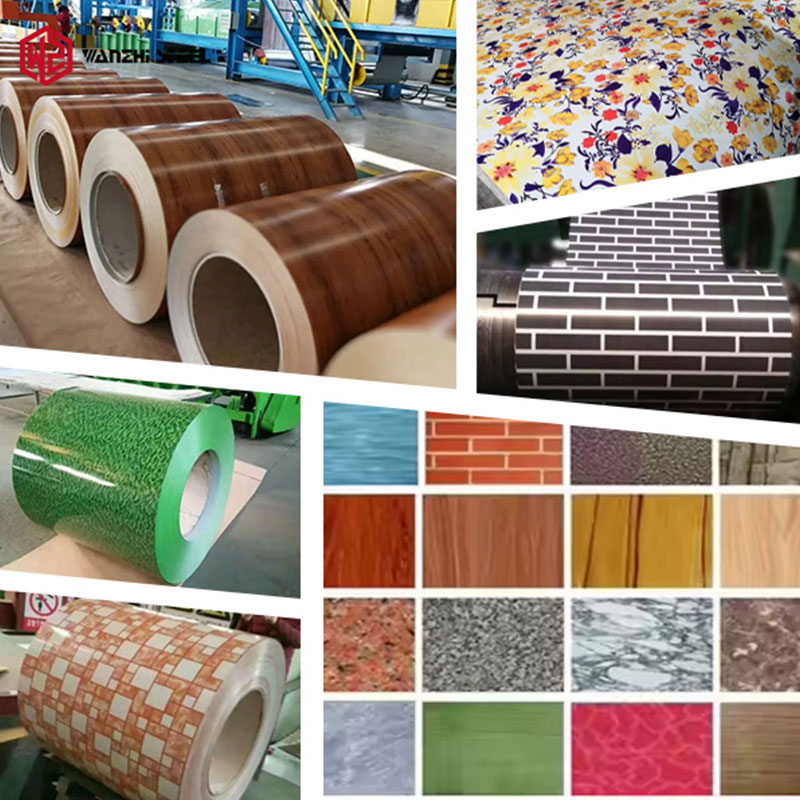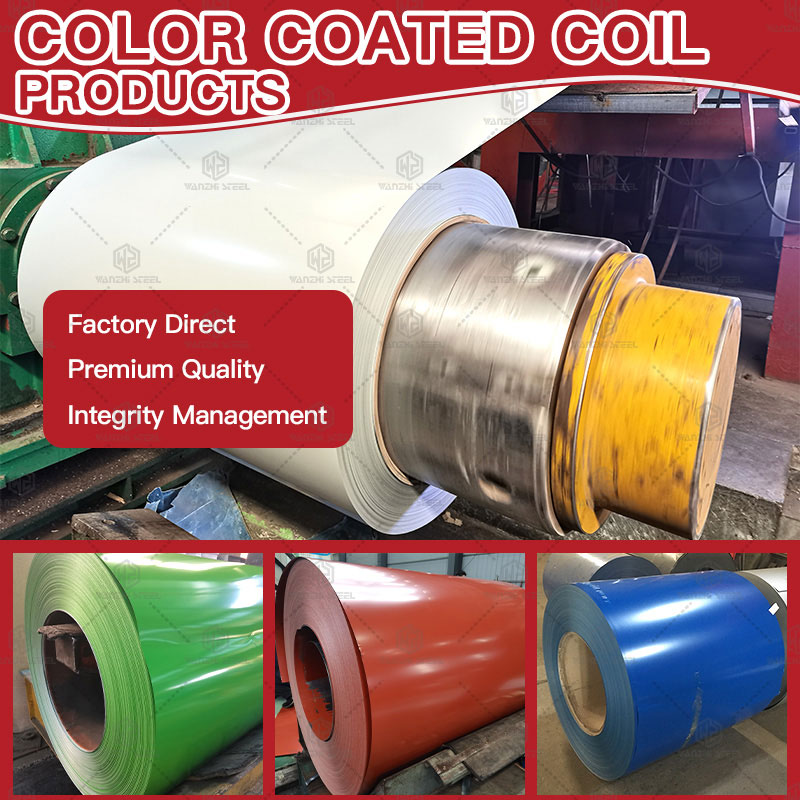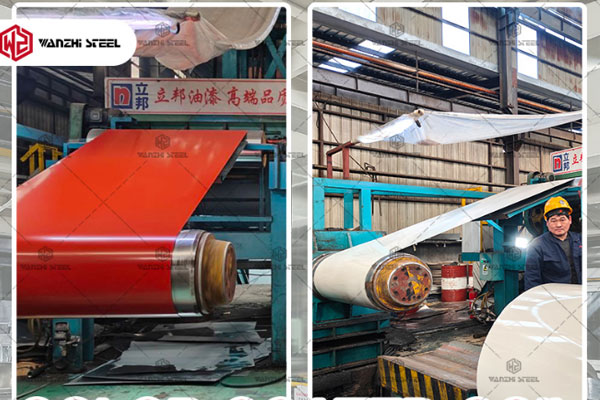PPGI Steel plays a vital role in industrial production and construction, particularly in applications such as PPGI coils, PPGI sheets, PPGI profiled panels, and PPGI structural components. Today, we will comprehensively explore the fundamental differences between color-coated steel through aspects like substrate, coating, performance, application scenarios, cost and service life, and customization. We will also discuss how to select cost-effective PPGI steel for projects!
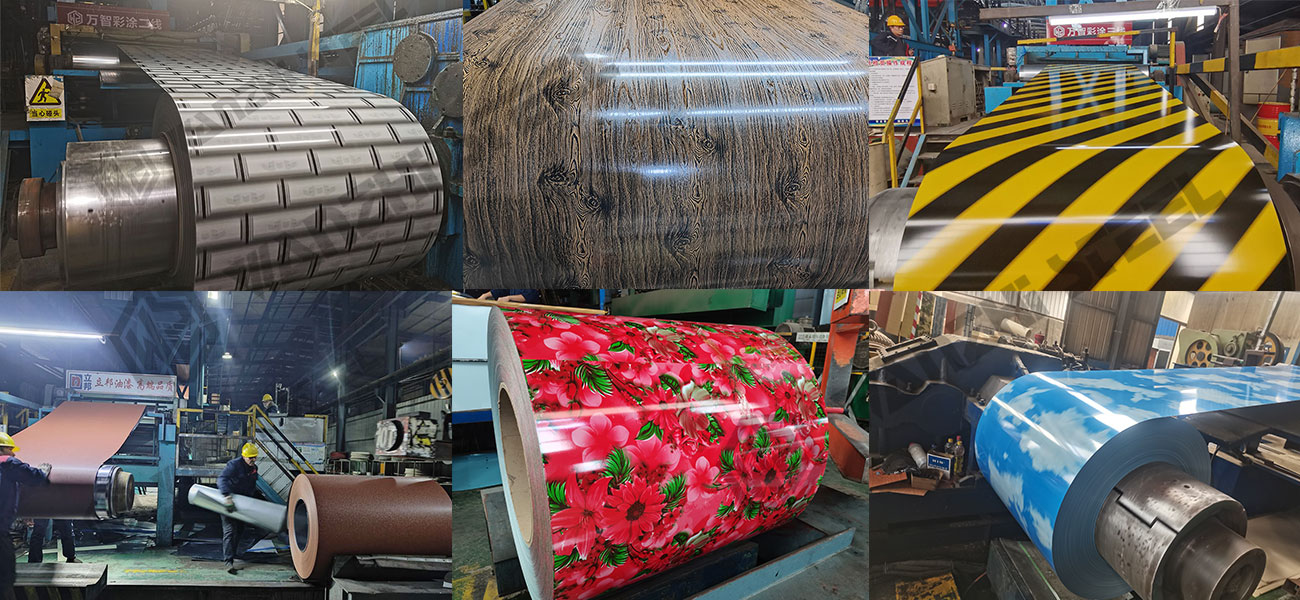
Base Material
Industrial PPGI prioritizes workability and strength, while architectural PPGI emphasizes protection and structural integrity. For architectural applications, base materials typically use hot-dip galvanized steel (40g/m² zinc coating) or cold-rolled steel to balance cost and performance. Architectural PPGI requires higher-strength steel to withstand mechanical impact and chemical corrosion.
Architectural Applications
- Common grades include S350GD, DX51D, etc.
- Thicker gauges: 0.5mm – 0.8mm+
- Higher zinc coating requirements (typically Z120 – Z275+) provide decades of underlying rust protection for buildings.
Industrial Applications
- Common grades: DX51D, DX52D.
- Thinner thicknesses: 0.12mm – 0.4mm
- Moderate zinc coating requirements (e.g., Z60 – Z180), sufficient for corrosion resistance. Greater emphasis is placed on the substrate’s ability to withstand equipment weight, friction, etc.
Coated
For industrial projects, PPGI selection prioritizes chemical resistance, hardness, scratch resistance, and flexibility. Architectural PPGI emphasizes UV resistance, hydrolysis resistance, and corrosion resistance.
Architectural Applications
- Requirements: Weather resistance, color/gloss retention, long-term aesthetics
- Recommendations: High-Durability Polyester (HDP) / Silicone-Modified Polyester (SMP) / Polyvinylidene Fluoride (PVDF)
- Thickness: Typically 20-25μm or higher
Industrial Applications
- Requirements: Functional performance, chemical resistance
- Recommendations: Primarily polyester (PE), with limited use of silicone-modified polyester (SMP).
- Thickness: Typically 15-20μm or higher
Performance
Architectural Applications
- Weather Resistance: Resists UV radiation, rain, acid rain, and temperature fluctuations.
- Strength and Rigidity: Withstands wind, snow, and maintenance loads.
- Color Retention and Aesthetics: Maintains vibrant color outdoors without chalking, ensuring uniform appearance and defect-free finish.
- Waterproofing and Sealing: Complex panel designs guarantee leak-proof integrity.
Industrial Applications
- Machinability: Requires stamping, bending, deep drawing.
- Chemical Resistance: Withstands exposure to oil and mild chemicals.
- Scratch and Wear Resistance: Endures physical friction from material handling and equipment installation.
- Hardness and Rigidity: Primarily determined by substrate thickness and panel profile.
Application Scenarios
Building Applications
- Internal partitions and ceilings in industrial facilities
- Equipment enclosures, cabinets
- Logistics storage racks, toolboxes
- Cleanroom wall panels (requires specific coating)
- Steel structure roofs/walls
- High-end residences, villas
Industrial Applications
- Automotive manufacturing (body panels)
- Home appliances (refrigerator shells)
- Energy facilities (wind turbine towers)
- Chemical equipment (tank linings)
Customization
Wanzhi Group offers PPGI OEM/ODM services, tailoring functionality, aesthetics, service life, and more.
Architectural Applications
- Specific thickness and strength
- Custom widths and lengths
- Coatings resistant to specific chemicals or oils
Industrial Applications
- Diverse colors and finishes (stone-like, wood-grain, etc.)
- Special panel designs (concealed fastening, unique drainage structures)
- Composite with insulation materials (forming sandwich panel systems)
Selection Recommendations
For indoor applications primarily serving space division or equipment protection, industrial-grade PPGI (e.g., PE coating) offers cost-effective solutions. For outdoor applications as building facades or roofing, architectural-grade PPGI is mandatory. Select coatings based on budget and environmental demands.

Industrial Sector: Prioritize high-strength, corrosion-resistant, functional color-coated steel to withstand complex operating conditions and long-term usage demands.
Architectural Sector: Balance cost and performance. Economic products are suitable for residential buildings, while public buildings benefit from high-weatherability coatings to enhance aesthetics and durability.

